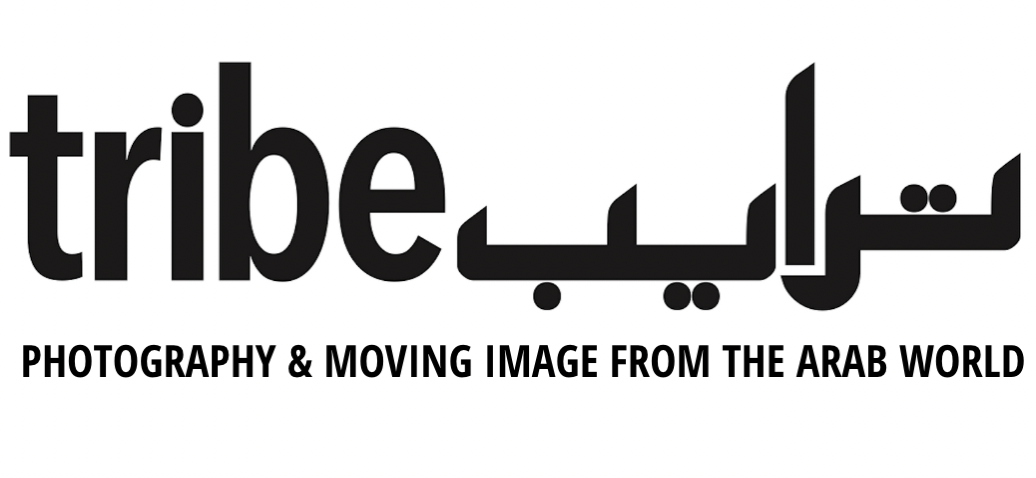Hareth Yousef: In Progress Fellaheen castles, views and dreams
The artist with two family friends on top of the Qasr that belonged to his grandfather’s family, demolished in 2017, (2000) 35mm film / Hareth Yousef, Self-portrait (2018) from the ongoing project Their Castle,
With text by Sarah Burney, independent curator and writer based in New York. Raised in Kuwait and Pakistan, Burney is a specialist of contemporary printmaking and contemporary art from South Asia and the Middle East.
It began with the discovery of a disappearance. In 2018, while hiking in the mountains of Kobar, Palestine, photographer Hareth Yousef found a contemporary building where a qasr fellah, a farmer’s castle, had stood. Yousef was newly returned to Palestine, having spent the last four years studying at Columbia College, Chicago. The disappearance underscored the accelerating speed at which the life of the Palestinian farmer, or fellah, had been changing in his village since 1967. The castle perched on the mountains overlooking olive, grape, and fig groves that his family had owned for generations. Yousef visited it frequently with his grandparents as a child; but he had never photographed it. He decided to find and memorialize the remaining castles of Kobar.
The architectural designation for these castles is corbelled stone huts. They are, in fact, agricultural watchtowers, al-manateer. They have been used by generations of fellaheen families as shelter while monitoring their land and living quarters during the busy harvest season. They are dry- stone constructions—built without any medium to bind the stones—and have been erected by those tending the land since antiquity. While some examples have been found in Ireland, England, and some countries in Southern Africa, they are most populous in the Mediterranean . Each region’s huts boast their own architectural idiosyncrasies. Yousef’s photographs are a poetic case study of the castles found in the mountains of Ramallah, Bethlehem, and Hebron. They are simple dwellings, closer architectural kin to the minimalist igloo than to a royal fortress. They are built to accommodate man, not tower above him. Their stony walls swell to form a soft, organic circle; a single cavity demarcates the entrance, and the roofs (those of them that still stand) are gentle grassy mounds. The absence of ornamentation heightens the beauty of the humble building’s materials. There is a rainbow within the limestone’s chalky white, pale peach, and soft grays. Perhaps the most important phenomenon captured by Yousef’s photographs is the complete harmony between these buildings and their environment. Hewn from the mountains on which they perch, the castles age along with their surroundings, both adorned by the same weathered patina and sage green flora.
To date, Yousef has photographed twenty castles. They are all in disrepair with no plans for conservation or protection. The modernization of the Palestinian farmer has made the dwellings redundant; vehicles will easily transport laborers back to their homes. There is no need for a temporary shelter within the fields. The agricultural labor force has also shrunk considerably, as young Palestinians move towards work in the cities and, perhaps most significantly, as more Palestinian farmers are evicted from their land by Israeli settlements. The ever-encroaching Israeli presence is never far from Yousef’s mind as he searches for castles. Many of the terraced farmlands that he treks through border new settlements. His mother would prefer he stopped.
Since Yousef began this project, something unexpected has happened: he has become a social media ambassador for the Palestinian farmer. Yousef documented his early exploratory hikes on Instagram (@hareth_palestine); posting images of the farmer’s castles that he found, views of the fruit groves from the buildings, painterly sunsets, and close-ups of individual flowers and grasses. Immediately after this, he became inundated with requests from friends to keep documenting Palestine’s beauty and to make his account public so that they could share his content. Yousef obliged. He also began sharing his family with us. His grandmother features frequently: she tells stories, tends to her olives and herbs, and gently admonishes the new generation for losing touch with their land. Today, close to 38,000 people learn about Palestine—its beauty, history, struggles, and potential—through Yousef’s moving images and captions. His mastery of the medium is no algorithmic lottery. Yousef earned a Bachelor of Arts in Photography at Columbia College, Chicago, was an Audio Visual Content Specialist at The Palestinian Museum, and is currently an MFA candidate in the Experimental and Documentary Arts Program at Duke University. He is a professional visual communicator. In making Palestine’s agricultural heritage his muse, he is, in his own way, embracing his ancestral identity as a champion and caretaker of Palestine’s soil: a fellah.
All images: Hareth Yousef, from the project, Their Castles (2019 - ongoing). Courtesy of the Artist.



